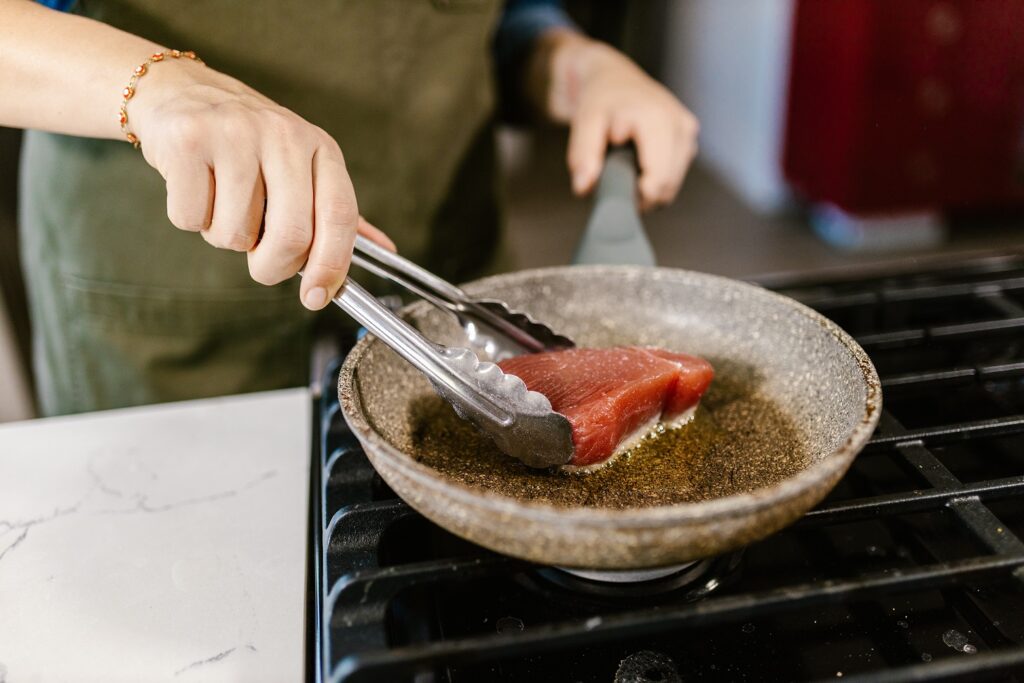Crispy Delights: Mastering the Art of Frying
Frying is a cooking technique that has been enjoyed by cultures around the world for centuries. From golden French fries to crispy fried chicken, fried foods have a universal appeal. However, achieving that perfect crispiness without ending up with a greasy result requires skill and understanding of the art of frying.
The Science of Frying:
To truly master the art of frying, it’s important to understand the science behind it. Frying involves the transfer of heat from hot oil to the food being cooked. The high temperature causes moisture inside the food to evaporate rapidly, creating steam that creates a protective barrier between the food and the oil. This process leads to the development of a crispy outer crust while sealing in moisture and preserving the flavors of the food.
Choosing the Right Oil:
Selecting the right oil is crucial for successful frying. Oils with a high smoke point, such as vegetable, canola, or peanut oil, are ideal for frying because they can withstand the high temperatures without breaking down or producing unpleasant flavors. Additionally, the flavor profile of the oil should complement the food being fried. For example, using olive oil for Mediterranean-inspired dishes or coconut oil for Asian-inspired flavors can enhance the overall taste of the fried food.
Temperature Control:
Maintaining the right frying temperature is vital for achieving crispy, evenly cooked results. If the oil is too cold, the food will absorb excess oil and become greasy. If the oil is too hot, the food may burn on the outside while remaining undercooked on the inside. The ideal frying temperature varies depending on the food being cooked, but a general guideline is to aim for a temperature between 350-375°F (175-190°C). Using a deep-fry thermometer is recommended to ensure accurate temperature control.
Preparing the Food for Frying:
Properly preparing the food before frying is essential for achieving optimal results. Coating the food in a thin layer of flour, breadcrumbs, or batter can help create a crispy outer crust. It also helps to dry the food thoroughly before frying to prevent excessive splattering and promote even cooking. Additionally, seasoning the food with salt or spices before frying can enhance the overall flavor profile.
Different Frying Techniques:
There are various frying techniques that can be employed based on the desired result and the type of food being cooked. Some popular techniques include deep-frying, shallow frying, pan-frying, and stir-frying. Deep-frying involves submerging the food completely in hot oil, resulting in a uniform crispiness. Shallow frying requires less oil and involves cooking the food on one side, then flipping it to cook the other side. Pan-frying is similar to shallow frying but with a bit more oil, while stir-frying involves quickly frying small pieces of food in a hot wok or pan.
Proper Oil Management:
Effective oil management is crucial for maintaining the quality of the fried food. Reusing oil multiple times is common in commercial kitchens, but it’s important to strain and store the used oil properly to prevent off flavors and contamination. Filtering out any food particles and storing the oil in a cool, dark place can help extend its shelf life. If the oil becomes dark, smoky, or has a rancid smell, it’s time to discard it and start fresh.
Maintaining Crispiness:
To maintain the crispiness of fried foods, it’s best to serve them immediately after frying. Allowing the food to sit for too long can cause it to become soggy as moisture escapes. If needed, you can keep the fried food warm in an oven set to a low temperature while you finish frying the remaining batches. Placing the fried food on a wire rack or paper towel-lined plate after frying can also help drain excess oil and preserve the crispiness.
Experimenting with Flavors and Variations:
Once you have mastered the basics of frying, don’t be afraid to explore different flavors and variations. Experiment with different seasonings, spices, and batters to create unique and exciting fried dishes. From adding herbs and spices to the batter to incorporating dipping sauces and glazes, the possibilities for flavor combinations are endless. Let your creativity shine and create your own signature fried creations.
Balancing Health and Indulgence:
While fried foods are undeniably delicious, it’s important to strike a balance between indulgence and health. Frying can be enjoyed in moderation as part of a balanced diet. Opting for lighter batters, using minimal oil absorption techniques, and choosing healthier frying oils can help make fried foods a more nutritious option. Additionally, pairing fried dishes with fresh salads or steamed vegetables can add a nutritious element to your meal.
Safety Considerations:
When frying, safety should always be a top priority. Hot oil can be dangerous, so it’s important to take precautions. Avoid overcrowding the frying vessel to prevent oil splatters, use long tongs or a slotted spoon to handle the food, and keep a fire extinguisher nearby in case of emergencies. Never leave hot oil unattended and be mindful of children or pets in the vicinity.
Mastering the art of frying requires practice, patience, and a solid understanding of the techniques involved. By understanding the science behind frying, selecting the right oil, maintaining proper temperature control, and employing various frying techniques, you can achieve crispy delights that will leave your taste buds satisfied. Remember to balance indulgence with health, experiment with flavors and variations, and prioritize safety in the kitchen. With time and experience, you will become a frying maestro, delighting yourself and others with perfectly crispy and delicious fried creations.
